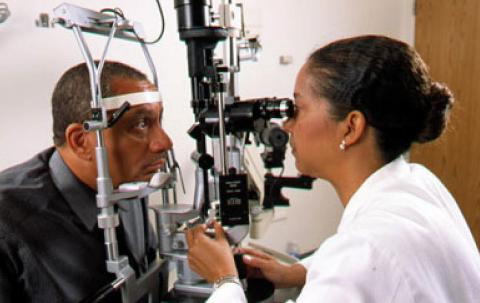Three Glaucoma-Related Genes Discovered

Photo: NEI
An analysis funded by the National Eye Institute has identified three genes that contribute to the most common type of glaucoma. The study increases the total number of such genes to 15.
“Just in time for Glaucoma Awareness Month, this unprecedented analysis provides the most comprehensive genetic profile of glaucoma to date,” said NEI director Dr. Paul Sieving. “These findings open avenues for the pursuit of new strategies to screen for, prevent and treat glaucoma.”
Glaucoma is a group of conditions that damage the optic nerve, the bundle of nerve fibers connecting the eye to the brain. Primary open angle glaucoma, the most common type, was studied in this analysis. In the majority of cases, pressure inside the eye is increased. Glaucoma affects side vision first, often going unnoticed for years. If detected early, vision loss can often be prevented with surgery or eye drops to lower pressure. The most common culprit of irreversible vision loss, glaucoma affects about 2.7 million Americans and 60 million people worldwide.
Some rare types of glaucoma are inherited via a single gene. The underlying causes of primary open angle glaucoma remain poorly understood, but likely involve the interaction of many genes with environmental influences.
The report appeared online Jan. 11 in Nature Genetics.
